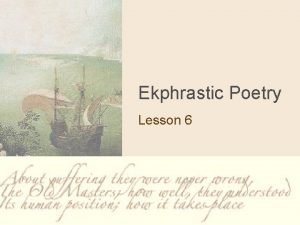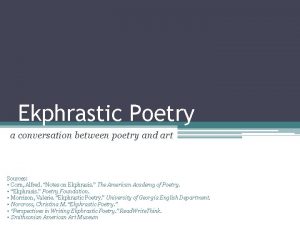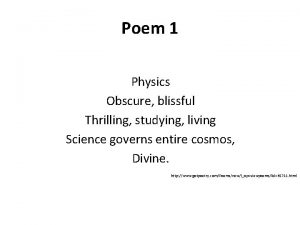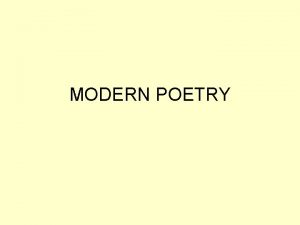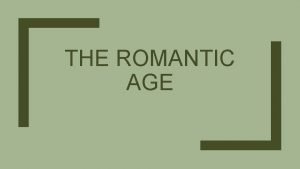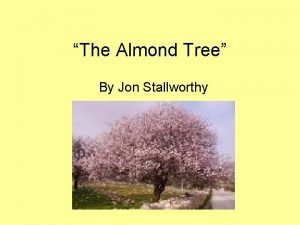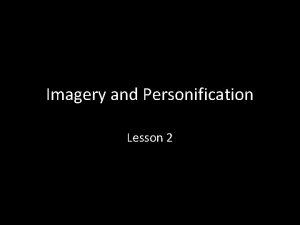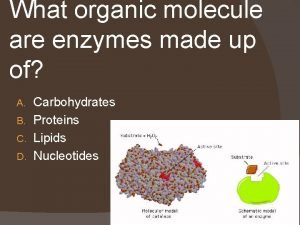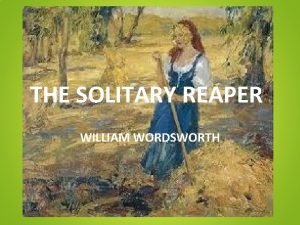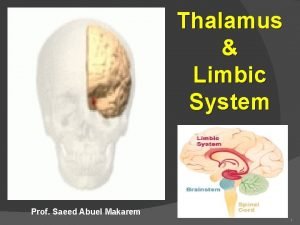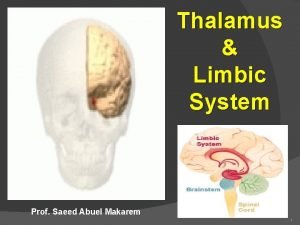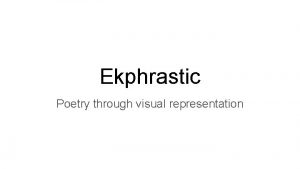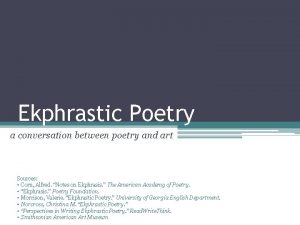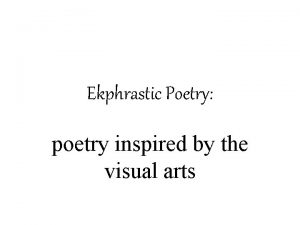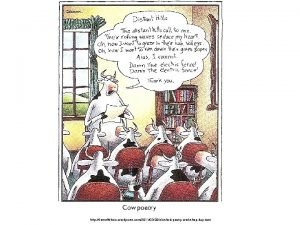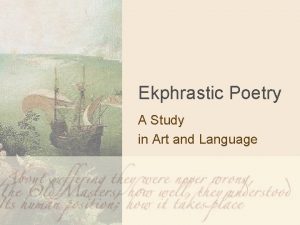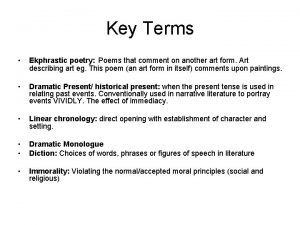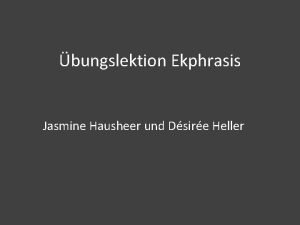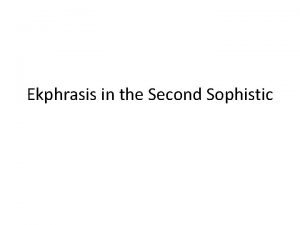Ekphrastic Poetry Lesson 6 ekphrasis n Composed from
















- Slides: 16

Ekphrastic Poetry Lesson 6

ekphrasis. n. “Composed from the Greek words ek (out) and phrazein (tell, declare, pronounce), ekphrasis originally meant ‘telling in full. ’. . . [I]t was [later] made to designate the description of visual art. ” - James A. W Hefferman

Ekphrastic Poetry can be… From the point of view of the poet looking at the artwork From the point of view of the subjects in the artwork Describing what’s happening in the artwork Describing what the artwork makes you recall in your own life

Rind by Catherine A. Callaghan (1999) The critic resolves her sonnets into empty feet. The boss rejects proposals he has barely skimmed. The husband compares her pilaf to swill for hogs. The gas she hopes will kill her leaks away. Art by M. C. Escher http: //www. puddinghouse. com/ekphrastic. htm The analyst unpeels her till she disappears.

Background • • • Poets and painters sometimes turn to one another for inspiration, and the dialogue has been mutually beneficial. Painters and illustrators have often been inspired by literature, especially in the eighteenth and nineteenth centuries. Between 1760 and 1900 there existed around 2, 300 paintings based on Shakespeare's plays alone. Writers turn as well to paintings for their inspiration. This is called ekphrastic poetry.

Questions to ask: • Is the poem simply an objective verbal description of the work of art, or does the poet make conclusions about what the painting means? • • Could you reconstruct the painting from the poem without actually seeing it? Why does the poet dwell on some features of the painting and ignore other aspects of the picture? • Do you agree with the meaning the poet "reads" in the painting, or do you think the writer misreads it or warps the scene depicted to personal ends?

Candle Hat By Billy Collins In most self-portraits it is the face that dominates: Cezanne is a pair of eyes swimming in brushstrokes, Van Gogh stares out of a halo of swirling darkness, Rembrandt looks relieved as if he were taking a breather from painting The Blinding of Sampson. But in this one Goya stands well back from the mirror and is seen posed in the clutter of his studio addressing a canvas tilted back on a tall easel. He appears to be smiling out at us as if he knew we would be amused by the extraordinary hat on his head which is fitted around the brim with candle holders, a device that allowed him to work into the night. You can only wonder what it would be like to be wearing such a chandelier on your head as if you were a walking dining room or concert hall. But once you see this hat there is no need to read any biography of Goya or to memorize his dates. To understand Goya you only have to imagine him lighting the candles one by one, then placing the hat on his head, ready for a night of work. Imagine him surprising his wife with his new invention, the laughing like a birthday cake when she saw the glow. Imagine him flickering through the rooms of his house with all the shadows flying across the walls.

Pieter Bruegel. Landscape with the Fall of Icarus. c. 1558 http: //www. people. virginia. edu/~djr 4 r/icarus. html

WRITING EXERCISE! Ekphrastic Poem

Try writing your own ekphrastic poem. You may choose one of the following paintings to base your own poem off of, or find your own artwork. Make your poem stronger by including: • • • Imagery Personification Simile/and or Metaphor

Stag at Sharkey’s. George Bellows. 1909. Oil on canvas

Nighthawks Edward Hopper. 1942. Oil on canvas

La classe de danse (The Dancing class) Edgar Degas, c. 1873 -75; Oil on canvas

Ice Box Andy Warhol (American, 1928– 1987). 1961. Oil, ink, and graphite on canvas

Girl at Mirror Norman Rockwell, 1954. Oil on Canvas

Homework Add images to your prezi (ideas below) Picture of poet Image of where they lived Image of one of their works Picture(s) related to theme Picture(s) related to imagery in poem If your poem is an ekphrastic one, include art work based on Citations page Cite where you got biography information Cite your poem Cite any pages that helped you with content (yahoo, sparknotes, ANYTHING)
 Nighthawks poem analysis
Nighthawks poem analysis Starry night ekphrastic poem
Starry night ekphrastic poem Ekphrastic poem generator
Ekphrastic poem generator Albatross (metaphor)
Albatross (metaphor) Traditional poetry vs modern poetry
Traditional poetry vs modern poetry Narrative and lyric poetry
Narrative and lyric poetry Augustan poetry aim
Augustan poetry aim Poetry poetry
Poetry poetry Personification of the moon
Personification of the moon Elements of manufacturing cost
Elements of manufacturing cost Enzymes are composed of what organic molecule
Enzymes are composed of what organic molecule Who has composed the poem the solitary reaper
Who has composed the poem the solitary reaper Ideally, an entity identifier is composed of
Ideally, an entity identifier is composed of Internal medullary lamina
Internal medullary lamina Limbic lobe
Limbic lobe An interrelated set of elements that function as a whole.
An interrelated set of elements that function as a whole. Skin composed of
Skin composed of
